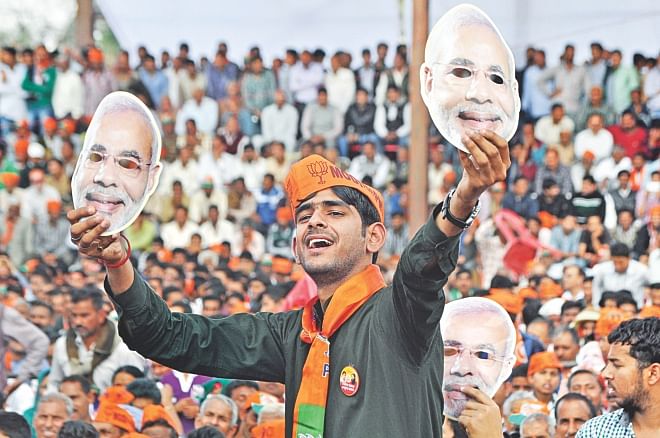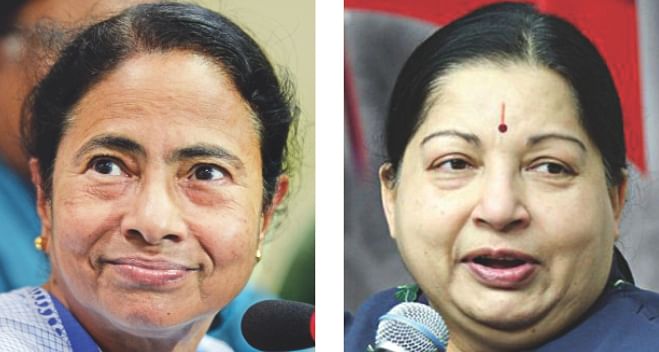Coalition game on the cards
Coalition game on the cards

A month and five days after it began, voting for India's general election is finally over and the exit poll numbers are rolling in. Based on previous experience, however, there is no reason to assume surveys are particularly accurate. In 2004 and 2009, all exit polls got the results completely wrong, overestimating the Bharatiya Janata Party and National Democratic Alliance's seat share by around 15-30 per cent.
If the BJP on its own wins upwards of 230 seats on May 16, there will be no need for analysts to whip out their calculators and figure out the political permutations and combinations that will help Narendra Modi cross the 272 mark.

But if the electorate gives the BJP less than that, the arithmetic of alliances will become important once again. Specifically, any score less than 220 means it has to find partners beyond the current constituents of the NDA.
The only potential partner who cannot team up with a Modi-led BJP is Mamata Banerjee's Trinamool Congress. But has already burnt the bridge between him and Mamata with scathing attacks knowing that the TMC leader is, after all, someone who is always going to be a problematic ally.
Modi has been more guarded in his campaign rhetoric in Orissa and Tamil Nadu, knowing that he might need the support of both Jayalalithaa and Naveen Patnaik, either from inside or outside the government, to cross the 272 mark in the Lok Sabha.
In Telangana and Seemandhra, Modi has been careful not to burn his bridges with the Telanga Rashtra Samiti and Jagan Reddy's YSR Congress. Both parties have already provided ample indication of their willingness to back him as PM.
But if Modi is no longer an obstacle in the way of the BJP's alliance-building, the very success of the NDA campaign in Orissa, Andhra and Tamil Nadu means the party's PM candidate will have to be able to paper over some of the complications this will produce in his relationship with Naveen Patnaik, Jagan Reddy and Jayalalithaa.
In Tamil Nadu, a strong showing by the BJP-led front — say, one where it wins anywhere from 5-8 seats — will make Jayalalithaa wary of Modi's long-term impact on the state's politics. But if the NDA does poorly, Jayalalithaa would almost certainly want to partner with Modi at the Centre, though not without extracting her pound of flesh.
The scenario is more or less same in Naveen Patnaik's Orissa and Jagan Reddy's Seemandhra.
Before he antagonised Mamata, even 170-180 BJP seats would have been enough for Modi to build an alliance and form the government. It would be unwieldy and unstable but it could be assembled. Today, however, Mamata will almost certainly demand that Modi step aside in favour of someone else from the BJP, a condition the party would never accept. To become PM on the back of 180 seats and a hostile Mamata, Modi would need Jagan, Jayalalithaa and TRS to win 60 seats between them.
If 180-200 seats range represents a danger zone for the BJP, anything beyond that would provide a comfortable platform for Modi. His NDA partners and TDP would likely take the tally up to at least 235. From there, reaching 272 will not be a difficult task.
The other reason that 180-200 for the BJP is a danger mark for Modi is because the only way the saffron party can poll so low is if the Congress wins around 100-120 seats. This seems a difficult ask, going by the opinion polls and ground sentiment, but then Indian elections do sometimes produce surprise outcomes.